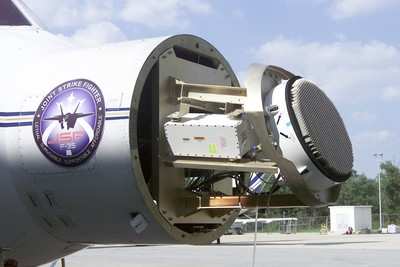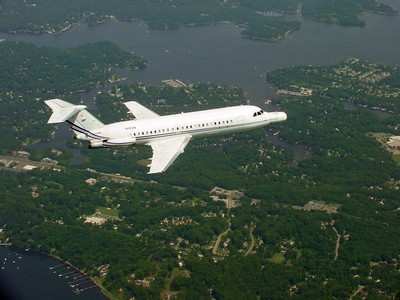Sat, Sep 10, 2005
Successful First Flights Conducted For F-35 Joint Strike
Fighter
 Initial flight testing has begun of
the advanced fire-control radar being developed for the Lockheed
Martin F-35 Joint Strike Fighter (JSF) aircraft. The radar is
designed to enable F-35 pilots to effectively engage air and ground
targets at long range, while also providing outstanding situational
awareness for enhanced
Initial flight testing has begun of
the advanced fire-control radar being developed for the Lockheed
Martin F-35 Joint Strike Fighter (JSF) aircraft. The radar is
designed to enable F-35 pilots to effectively engage air and ground
targets at long range, while also providing outstanding situational
awareness for enhanced
survivability.
Designated the AN/APG-81, the active electronically scanned
array radar was first flown on Aug. 23 and 25 on Northrop Grumman's
BAC-1-11 testbed aircraft. During the flights, the all-aspect
search, air-track and synthetic-aperture radar mode capabilities of
the radar were successfully evaluated against airborne and
ground-based targets.

"The outstanding performance of the radar on these initial
flights underscores the intense development effort under way on the
F-35 mission avionics and marks the culmination of a successful
design, hardware build, software development and systems
integration process," said John C. Johnson, vice president of
Combat Avionics Systems at Northrop Grumman. "We expect to
accelerate the validation of the radar performance during the
flight-test program and progress with the systems-integration
effort ahead of schedule."
The radar's first flight tests in the BAC-1-11 aircraft were
conducted over the local airspace in the vicinity of Northrop
Grumman's Electronic Systems sector headquarters complex adjacent
to the Baltimore/Washington International Airport. In
November, the first F-35 radar system will be delivered to Lockheed
Martin Aeronautics Co. in Fort Worth, Tex., where it will be
installed into the JSF Mission Systems Integration Lab and tested
with other F-35 mission-avionics systems.

The F-35 is a stealthy, supersonic multi-role fighter designed
to replace a wide range of aging fighter and strike aircraft.
Three variants derived from a common design will ensure the F-35
meets the performance needs of the U.S. Air Force, U.S. Marine
Corps, U.S. Navy and allied defense forces worldwide, while staying
within strict affordability targets.
In addition to providing the radar, Northrop Grumman's
Electronic Systems sector is providing the AN/AAS-37
electro-optical distributed aperture system for the F-35. The
distributed aperture system will provide F-35 pilots with a unique
protective sphere around the aircraft for missile warning,
navigation support and night
operations.
More News
Aero Linx: Transport Canada We are a federal institution, leading the Transport Canada portfolio and working with our partners. Transport Canada is responsible for transportation p>[...]
Gross Navigation Error (GNE) A lateral deviation from a cleared track, normally in excess of 25 Nautical Miles (NM). More stringent standards (for example, 10NM in some parts of th>[...]
From AirVenture 2017 (YouTube Edition): Flight-Proven Booster On Display At AirVenture… EAA AirVenture Oshkosh is known primarily as a celebration of experimental and amateu>[...]
Aircraft Parachute System (CAPS) Was Deployed About 293 Ft Above Ground Level, Which Was Too Low To Allow For Full Deployment Of The Parachute System Analysis: The day before the a>[...]
Also: 48th Annual Air Race Classic, Hot Air Balloon Fire, FAA v Banning 100LL, Complete Remote Pilot The news Piper PA-18 Super Cub owners have been waiting for has finally arrived>[...]
 ANN's Daily Aero-Linx (06.29.25)
ANN's Daily Aero-Linx (06.29.25) ANN's Daily Aero-Term (06.29.25): Gross Navigation Error (GNE)
ANN's Daily Aero-Term (06.29.25): Gross Navigation Error (GNE) Classic Aero-TV: Anticipating Futurespace - Blue Origin Visits Airventure 2017
Classic Aero-TV: Anticipating Futurespace - Blue Origin Visits Airventure 2017 NTSB Final Report: Cirrus SR22
NTSB Final Report: Cirrus SR22 Airborne Affordable Flyers 06.26.25: PA18 Upgrades, Delta Force, Rhinebeck
Airborne Affordable Flyers 06.26.25: PA18 Upgrades, Delta Force, Rhinebeck





